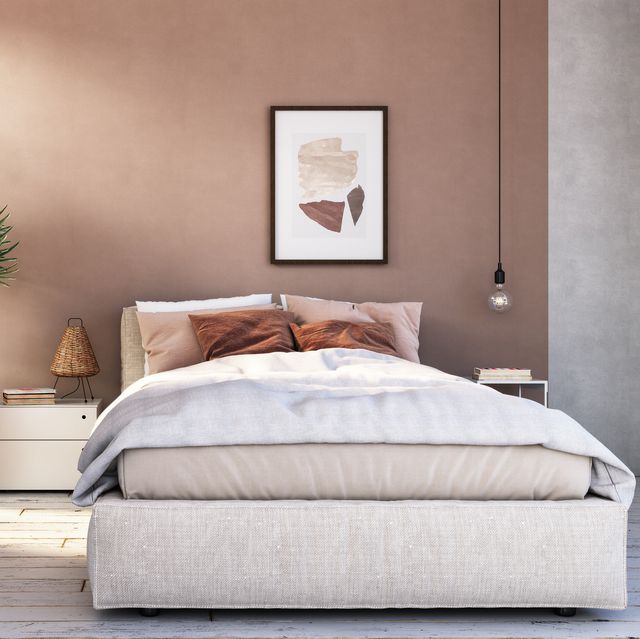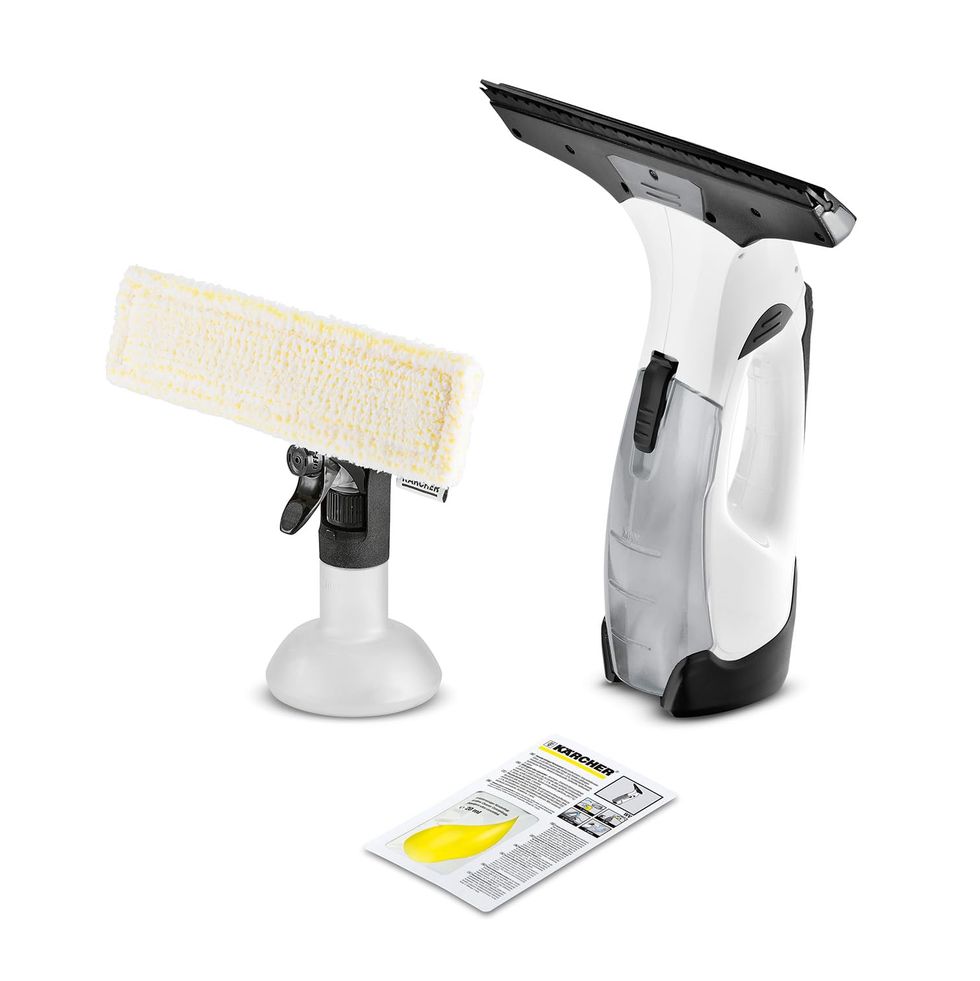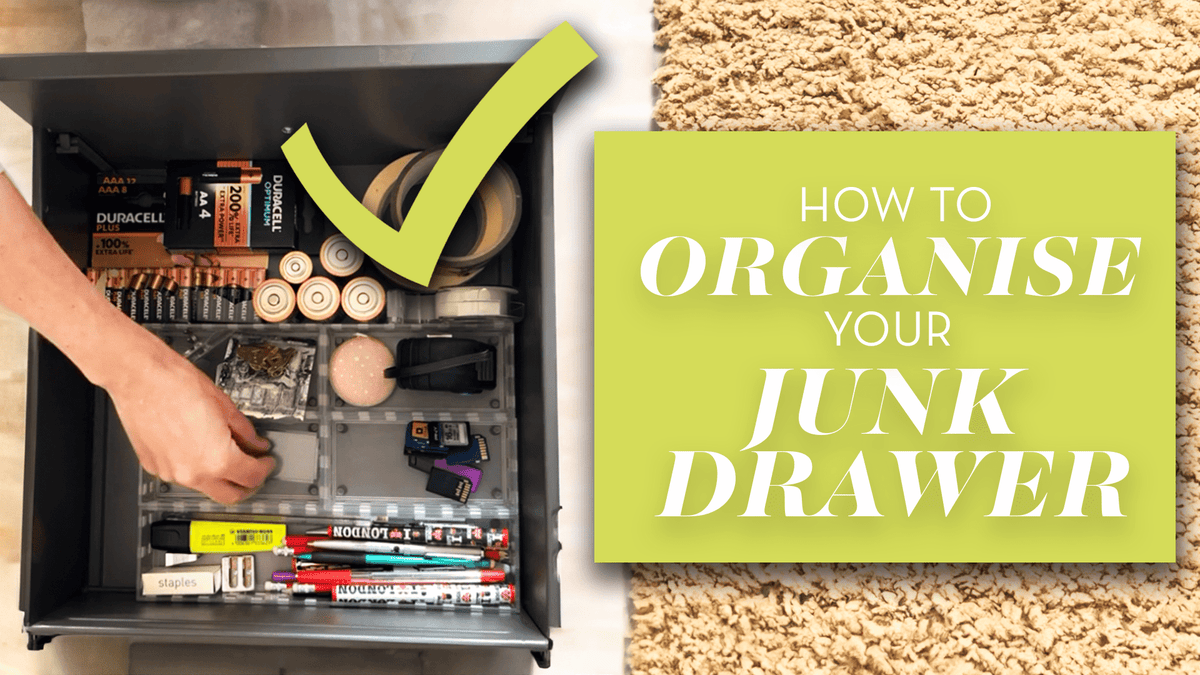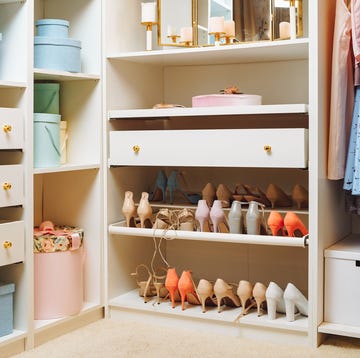Although 95% of us declutter, one in four of us feel embarrassed by all the ‘stuff’ in our homes. And while 42% of us are enthusiastic about sorting it out, almost a third (29%) feel ‘apprehensive and overwhelmed’.
These were just some of the standout stats from our 2025 Good Housekeeping decluttering survey, where 1,200 of you came clean about your tidying habits – from how often you do it to what puts you off and your biggest regrets (yes, the clothes that got away…).
Below, we take a deep dive into the findings, as well as looking at how to ease the mental toll and sharing all our expert tips and techniques to help you tackle the clutter without the stress.
Avoiding the declutter ‘overwhelm’
When we asked our reader panel how they felt before decluttering, 42% said they felt enthusiastic and confident, but 29% said they generally felt overwhelmed and apprehensive. So a pretty mixed bag.
The size of the project you’re dealing with can have a big impact on how you feel about the task at hand. For instance, if you’re just decluttering your bedroom drawers or your tidying your handbag, it can feel more achievable, versus organising your wardrobe overflowing with clothes, shoes and accessories (which can take a lot longer).
You also need to factor in what you’re decluttering. If you’re sorting through something you don’t want to part with, such as books or clothes, you’re likely going to be more reluctant to get stuck in.
The key to improving confidence when decluttering is breaking up the work, doing it little and often. By decluttering more regularly, the work becomes less intimidating and easier to maintain. You also improve your decision-making skills.
When asked whether they feel in control while decluttering, a lot of our readers (66%) said they feel somewhat in control, but think they could be better at it. That’s compared to 29% who feel fully in control with a clear system to follow, and 5% admitting they’re out of control and don’t know what they’re doing.
Again, decluttering regularly can close the gap here, as can finding a decluttering method that works for you (more on this later). But the fact that two-thirds of us only have some sense of control is clearly another factor that puts us off decluttering.
Even if you don’t enjoy decluttering (19% of us really aren’t fans), it seems to be worth grinning and bearing it – for the majority. When asked how they felt after decluttering, 70% of readers said ‘satisfied’, 54% were ‘relieved’ and 38% said ‘rewarded’. But 34% were exhausted and 10% regretted it.
Breaking this down, the stats show we’re generally happy with our work, but because we leave the clutter to build for so long (67% only declutter when they have to), we’re dealing with larger projects that are mentally and physically exhausting. This is a major decluttering mistake, which may seem harmless at first, but it can really impact your motivation. Ultimately, a lot of us need to break the habit of only decluttering when we absolutely have to.
Sharing the decluttering load
When asked who declutters in their home, 66% said they do it alone, while 33% have a partner who helps. Only 3% involve the children.
When you think about it, it’s not surprising that two-thirds of us declutter alone. The items we sort through are likely to be personal to us, from clothes to books and memorabilia, and you wouldn’t want someone else to make the decision (on whether it stays or goes) for you.
However, another perspective could be welcome when you’re struggling with a decision, particularly with sentimental items. Having a second opinion can help you let go.
Interestingly, while only 3% involve their kids when decluttering, 95% think it’s important for children to learn how to declutter. More than half our panel (52%) also revealed that they don’t believe their children know how to declutter, and they pick up after them.
Teaching little ones to declutter from a young age can help them value their belongings more and stop accumulating clutter as they grow. It will give you a much-needed helping hand, too! Learning how to declutter regularly from a young age will also help children feel more confident and familiar with the process.
From ‘churning’ to regrets: The decluttering pitfalls to avoid
So, what puts us off decluttering? When we put it to the panel, 47% said they struggle to decide what to get rid of, 34% find it hard to remove the items once sorted and 38% don’t like how much time it takes. That’s compared to just 16% who love decluttering.
Indecisiveness is the number one hurdle here, and can lead to something known as ‘churning’; the act of moving things around but never actually deciding what to do with them. Just think of it as the ‘save for later’ pile we often create as we go. The trouble with churning is it doesn’t get you anywhere. In fact, it can make matters worse if the items are left on display while you’re still deciding, causing more stress and self-criticism. And they end up being gradually reabsorbed into the home anyway.
To beat churning, it can help to consider what happened last time: have you churned before and, if so, how long did it take to remove the items? Then, make a definitive plan before you start of what you want to achieve and how. This can help with decision making. If you spot yourself churning, recognise it and ask yourself why you’re doing it.
Failing to get rid of the items after you’ve finished decluttering is another bad habit to break. This often sits hand in hand with churning; bin bags sit on display, prepped for removal, but they never go anywhere. Or they just sit in the boot of the car for weeks on end. The way to beat this is through planning and preparation. Place the items where they can’t be avoided, such as by the front door or on the seat beside you in the car, to force you to deal with them. Or you could schedule a removal day on your calendar so you know the items will be addressed. Either way, don’t let them sit in your home for weeks on end.
Fear of regret is another obstacle. When we asked our readers if they’d every regretted decluttering anything, nearly a third (32%) admitted they had.
The biggest regret was decluttering clothing, followed by sentimental items, unexpectedly useful items, items that turned out to be valuable and books and media. Many of our panel regretted giving away clothes that later came back into fashion, as well as childhood toys.
It’s important to take your time as you declutter and consider the true value of items as you sort through, particularly if they’re sentimental. When it comes to those treasured items, it’s best to save them for last so you’re used to the process and have honed your decision-making skills. Rather than looking for what to remove, consider what has the most value to you, so you can separate these first. Then, for those that remain, consider why you’ve kept them until now and what they’re really worth to you. Ask yourself whether another family member or close friend might value them more. But, if they’re no longer needed and no longer serve a purpose, it might be time to say goodbye. With difficult decisions like these, it can help to ask to ask a friend or family member to help.
There’s always the chance of regret as you declutter, but we think the happiness and satisfaction your new space brings you is worth the risk.
The best decluttering techniques, tried and tested
More than half (55%) of our panel said they didn’t use a specific decluttering technique. Otherwise, the four-box method was the most popular (29%), followed by the KonMari method (23%) and then Swedish Death Cleaning (5%).
Whether you’re well versed in decluttering or just starting out, using a method can give you a specific route or even a mindset to follow as you sort. This can help to break up a bigger project and give you a better sense of control.
Our household advice editor has tried a lot of the most popular techniques herself, including the Ski Slope method, Swedish Death Cleaning and the Minimalism Game. You’ll find her full reviews below. Each one will suit a different personality and a different project, so it’s worth trying a few to see what works for you.
For instance, the Ski Slope method is brilliant if you’re time-poor and decluttering one room. Whereas both the KonMari method and Swedish Death Cleaning are ideal for large-scale decluttering. On the other hand, the Minimalism Game will motivate you if you’re competitive.
The golden rules of decluttering
At Good Housekeeping, we like to think of ourselves as decluttering pros, but we still get it wrong (we may have been guilty of churning from time to time). These are the golden rules we swear by after years of keeping on top of the clutter.
- Don’t bite off more than you can chew. You’ll just demotivate yourself and make a mess in the progress. Plan what you want to achieve and how long it will likely take.
- Work through by category where you can. By doing this, you can see everything you own (as well as duplicates), which can help you let things go. Start with items and areas with less sentimental value that are more likely to be filled with clutter, such as the attic or garage.
- Save sentimental items for last, so you’re used to the decision-making process and are better able to assess their full value. Don’t get lost down memory lane as you sort through them; you can lose hours of time and feel demotivated afterwards.
- Don’t self-criticise. It’s easy to lose your temper if progress is slow or you feel overwhelmed. Recognise the effort you’re putting in to make a change. Make a plan to deal with what’s upset you and handle it once you’ve calmed down.
- Take care with storage solutions. While these can help to make the most of a limited space, they can also end up contributing to the clutter if not used properly. Declutter beforehand, then take stock of what you need to store and measure the space to find the best fit.




































